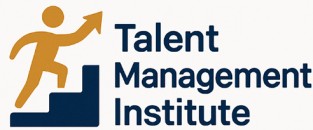
Understanding the Need for Backfilling
Evaluating the Importance of Replacing Departed Employees
The need to backfill a position often arises when an employee departs, creating a vacant position that impacts the effectiveness and morale of the existing team. Understanding the significance of backfilling is essential for maintaining productivity and ensuring that the organization's operations run smoothly. The absence of a key team member can disrupt workflows and place additional burdens on current employees, leading to decreased job satisfaction and potential burnout.
Filling a vacant role isn't just about finding a replacement but about identifying the right talent that aligns with both the responsibilities of the job and the long-term goals of the organization. This requires a structured backfill strategy and an understanding of what the position entails. Hiring managers must develop a comprehensive backfill plan that leverages current resources such as internal candidates and outlines the necessary skills and qualifications required for the role.
Successful backfilling involves anticipating potential disruptions caused by an employee’s leave and implementing a proactive approach to workforce planning. This includes defining clear job responsibilities within a detailed job description and ensuring any new team members seamlessly integrate into the existing team dynamic.
For a detailed guide on assessing your professional work and staffing needs, you can read more about optimizing your staffing strategies to improve your hiring efficiency.
Identifying the Right Candidate
Spotting the Perfect Candidate for Backfilling
Identifying the right candidate is crucial to the success of any backfilling process. When an employee leaves a vacant position, this departure can create an opportunity to bring in fresh talent that complements the existing team or to promote or reshuffle internal candidates who possess the appropriate skills for the role.
For optimal results, hiring managers must have a clear understanding of the job description and the specific skills needed for the backfilling position. This clarity provides a solid foundation for the recruitment process and ensures that the new employee will fit seamlessly into the team. Furthermore, it is essential to consider both short-term and long-term needs of the organization when filling vacant positions.
- Conduct thorough interviews to evaluate the potential of candidates and their alignment with the team culture.
- Assess internal candidates as part of a strategic backfill plan to utilize existing talent effectively.
- Utilize best practices in workforce planning to anticipate future needs and ensure a steady pipeline of qualified employees.
Ensuring a good talent match is paramount for both internal and external hiring. By having a systematic backfill process, organizations can not only replace employees but also strengthen their teams. For more insights on how identifying the perfect candidate can drive success, check out this detailed article.
Internal vs. External Recruitment
Weighing Internal and External Recruitment Options
When it comes to filling a vacant position, organizations often face the dilemma of choosing between internal and external recruitment. Each approach has its own set of advantages and challenges, and the decision can significantly impact the backfill process.
Internal recruitment involves promoting or transferring current employees to fill the vacant role. This strategy can be beneficial for several reasons:
- Familiarity with the Organization: Internal candidates are already familiar with the company culture, processes, and team dynamics, which can lead to a smoother transition.
- Cost-Effectiveness: Promoting from within can be more cost-effective than hiring externally, as it reduces the time and resources spent on onboarding.
- Employee Morale: Offering growth opportunities to existing employees can boost morale and motivation, encouraging them to stay long term.
However, internal recruitment might not always be the best fit, especially if the vacant position requires specialized skills or a fresh perspective. This is where external recruitment comes into play:
- Access to a Larger Talent Pool: External recruitment opens up the opportunity to bring in new skills and ideas that may not be present within the current workforce.
- Innovation and Change: New employees can introduce innovative approaches and challenge the status quo, which can be beneficial for organizational growth.
- Filling Skill Gaps: Sometimes, the skills required for a backfilling position are not available internally, making external recruitment necessary.
Ultimately, the choice between internal and external recruitment should align with the organization's backfill strategy and workforce planning goals. Hiring managers need to carefully evaluate the job description and the specific needs of the role to determine the best approach. For more insights on developing an effective backfill plan, consider exploring various talent management strategies that can support both short term and long term organizational objectives.
Streamlining the Transition Process
Smooth Transition into the Role
The transition process is crucial when tackling the challenges of backfilling positions in your organization. A well-executed transition can significantly ease the backfill process, ensuring that new employees or internal candidates are seamlessly integrated into their roles. Here are a few best practices to streamline this stage:- Create a Comprehensive Job Description: Clearly outline the responsibilities, expectations, and skills required for the position. This foundational document serves as a guide for both backfill candidates and hiring managers, helping to align expectations and ease the transition.
- Onboarding and Training: Effective onboarding will help your new team members quickly adapt to their roles. Provide comprehensive training resources and support, such as online tools or mentorship from current employees, to ensure they acquire the necessary skills efficiently.
- Facilitate Knowledge Transfer: Encourage departing employees to share their insights and experiences with those taking over their roles. Implement a structured process for transferring key knowledge about the role and work processes to ensure continuity and minimize disruptions.
- Internal Support System: Assign current team members to assist in the induction of the new hire. Having a familiar face involved in their onboarding can make the process more comfortable for the recruit and foster team cohesion.
- Monitor and Adjust the Transition Plan: Regularly review the effectiveness of the transition process. It’s imperative to adapt the backfill strategy based on the real-time feedback from team members and previously backfilled positions, to ensure long-term success.
Leveraging Technology in Backfilling
Embracing Technological Solutions for Efficient Backfilling
In the modern workplace, technology plays a pivotal role in streamlining the backfill process. Leveraging the right tools can significantly reduce the time and effort involved in filling a vacant position. Here’s how technology can be a game-changer in backfilling roles:
- Automated Job Posting: Using platforms that automatically distribute job descriptions across multiple channels ensures that the vacant position reaches a wider audience. This increases the pool of potential candidates, making it easier to identify the right fit for the role.
- AI-Powered Candidate Screening: Artificial intelligence can help in quickly sifting through resumes to identify candidates whose skills and experience align with the job requirements. This not only speeds up the hiring process but also enhances the quality of candidates being considered.
- Virtual Interviews: Conducting interviews through video conferencing tools saves time for both hiring managers and candidates. It also allows for a more flexible scheduling process, which can be crucial when trying to fill a position quickly.
- Onboarding Platforms: Once a candidate is selected, digital onboarding platforms can facilitate a smooth transition by providing new employees with access to necessary resources and training materials. This helps them integrate into the team more efficiently.
- Data Analytics: Utilizing data analytics can provide insights into the effectiveness of your backfill strategy. By analyzing metrics such as time-to-fill and candidate quality, organizations can continuously improve their backfilling processes.
By integrating these technological solutions, organizations can not only expedite the backfilling process but also ensure that they are making informed decisions that align with their long-term talent management goals. As you navigate the challenges of filling vacant roles, consider how technology can support your efforts in maintaining a robust and agile workforce.
Measuring Success in Backfilling
Evaluating the Effectiveness of Backfilling Actions
Measuring the success of backfilling is crucial for understanding how well the organization is handling vacant positions and maintaining workforce stability. This involves various components that reflect the efficiency and effectiveness of backfilling strategies.- Performance Metrics: Evaluate the performance of the backfilled employee in their new role. Assessing their ability to meet job expectations and contribute positively to the team will help in gauging how well the backfill process worked.
- Time-to-Fill: Track the time it takes to fill a vacant position, as this is an important indicator of the efficiency of your backfilling process. Quick transitions minimize disruption in team dynamics and project continuity.
- Employee Turnover Rates: High turnover might suggest issues with the backfill strategy or selection process. Monitoring turnover rates post-backfilling can provide insights into whether the right candidates are being chosen for roles.
- Feedback from Team Members: Collecting feedback from current employees and hiring managers can identify areas for improvement. Insights from those directly impacted by the backfill can highlight strengths and weaknesses in the approach.
- Skill Utilization: Analyzing if the skills of the backfilled employee are being effectively utilized in their new role offers a measure of how well internal candidates have been integrated into backfill positions.













